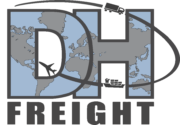Using digital consignment notes does not only save money due to lower costs per document. Going digital also saves time – and time is money. A new study by the University of Hasselt (Belgium) now confirms that companies can save over € 13 per consignment note when using eCMRs compared to the paper version.
Integrating a new system, like for example TransFollow for the use of digital consignment notes, into the existing process of creating, issuing, signing and archiving freight documents is not always on top of companies’ priority lists. Although using eCMRs will improve supply chain visibility, going digital often seems to be too big of an investment. Without direct costs savings or an urgent need for a change, existing software systems are often kept in place for as long as possible. Innovation offers competitive advantages on the long term, but why go digital as long as everybody, including supply chain partners, still uses paper consignment notes? If the improved supply chain visibility is not enough of an argument, the findings of a recently conducted study by the University of Hasselt in Belgium for sure are: Using digital consignment notes can lead to administrative cost savings of over € 13 per document compared to using the paper version. These savings are not directly linked to the costs per document, but rather to the working time needed to create, issue, distribute, sign and archive a single consignment note. This result also confirms older studies conducted at the Lappeenranta University of Technology in Finland in 2017. Going digital when it comes to consignment notes can therefore save companies real money – and leave employees more time to focus on other tasks.
Time is Money: Administrative Cost Savings
With the eCMR pilot currently being operated in the Benelux, the University of Hasselt conducted a research with a total of 72 respondents consisting of consignors, carriers and forwarding companies. Based on the response, the average time needed for every step of the process was calculated for both cases, using digital and paper consignment notes. These results were then translated to costs based on the average hourly rate of employees in Belgium according to the research agency. The findings did not come as a surprise: Going digital saves lots of time, and time is money. When looking at the party creating and issuing consignment notes, for example, the process takes eleven minutes longer when using the paper version. This is mostly due to the time it takes to distribute the consignment note to the other parties involved. The same goes for the carrier: Almost ten minutes per document can be saved when using digital consignment notes, due to the shorter time needed during signing. But the most significant time saving factor concerns all supply chain partners, as archiving digital consignment notes can be done with just a few clicks, compared to the paper version that needs to be sent, scanned and then be archived physically. While the administrative costs of paper freight documents total € 22.83 Euros on average, the costs can be reduced to € 9.72 when using digital consignment notes. This is an administrative cost saving of € 13.11 per document – assuming companies handle up to hundreds of consignment notes every single day, this quickly adds up. But if administrative cost savings are this high, how come companies still do not set their focus on going digital?
Keep Using Existing Systems
The study by the University of Hasselt did not only focus on calculating the administrative cost savings, but also came up with an answer to why companies still hesitate to start using digital consignment notes even though the currently running pilot in Belgium encourages them to do so. Over 80 percent of the respondents admitted to have a lack of knowledge when it comes to digital consignment notes. It was not further specified if the lack of knowledge was regarding the software systems to use eCMRs, the administrative cost savings or other related aspects, but surely the findings of the study in combination with the rising communication about the use of eCMR internationally will cope with that in the future. However, another reason to hesitate according to respondents not yet using digital consignment notes is the incompatibility of existing software systems.
As mentioned before, changing an active system takes effort, time and money and therefore often is not a top priority. Especially when supply chain partners are not (yet) looking at starting to use digital consignment notes, this often leads to postponement of the entire project. Expectations are that, if supply chain partners are in the process of going digital themselves, it does not make sense to start using digital consignment notes as software systems are not compatible with each other and partners would still need the paper version. This is why TransFollow does not only integrate with Transport Management Systems (TMS), Warehouse Management Systems (WMS) and Freight Management Systems (FMS), but also provides an app and a portal. While companies can continue to use their proprietary software solution to handle eCMRs with TransFollow integrated in the backend of their system, supply chain partners can easily see, sign and archive digital consignment notes by logging in to the app or the portal. For their own administration, the PDF version of the consignment note can be downloaded with just a few clicks. And even if the counterparty does not have a TransFollow account, they get notified by e-mail as soon as their e-mail address is linked to a digital consignment note. Therefore, TransFollow is compatible with most systems currently being used to create, issue, distribute, sign and archive consignment notes – and offers an easily compatible solution to benefit from administrative cost savings to go digital straight away.
More information under www.transfollow.org.

